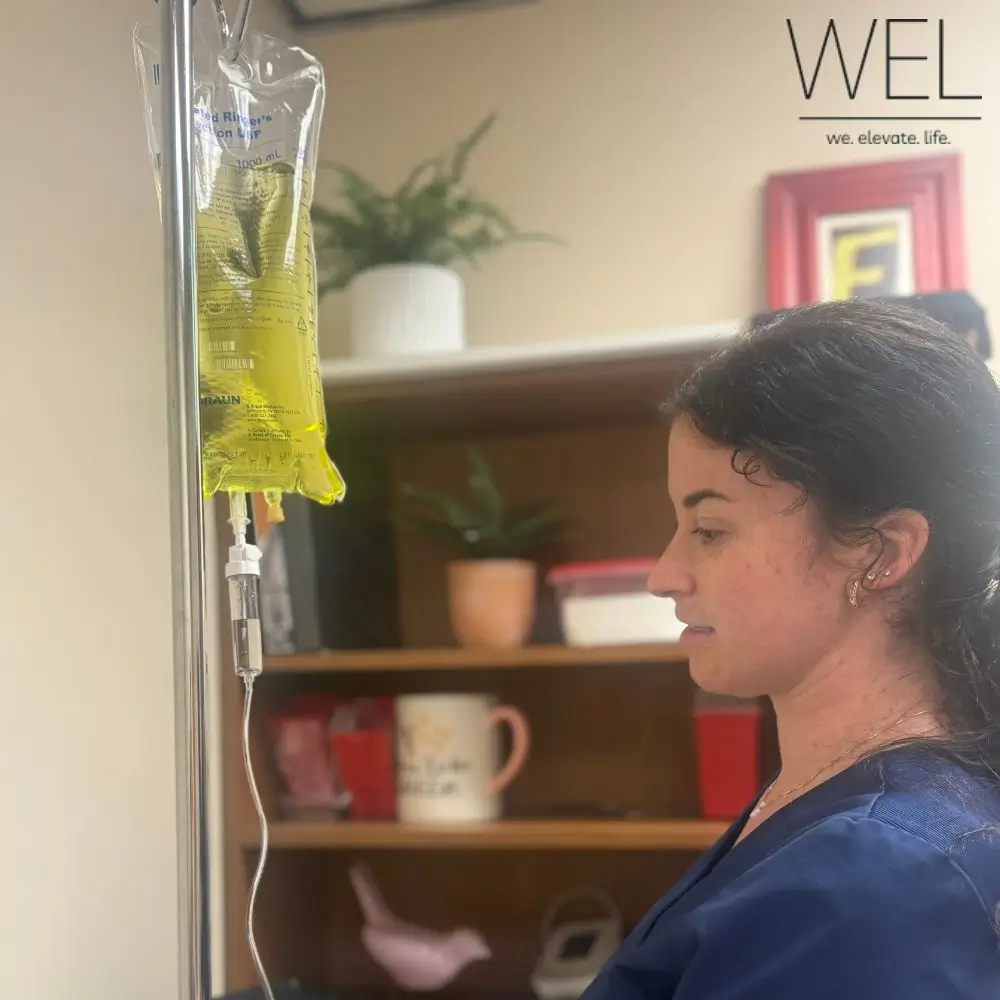Chronic pain affects millions of people and can make everyday tasks feel impossible. Many try standard treatments, only to find that relief is temporary or limited. However, innovative therapies are now offering new hope for lasting relief by addressing the sources of pain instead of just masking them.
In this blog post, we explore how chronic pain develops, why conventional treatments often fail, and how advanced approaches, like Exosomes IV therapy, can support recovery and improve quality of life.
What Is Considered Chronic Pain
Chronic pain is pain that lasts more than 3 to 6 months and continues even after the initial cause, such as injuries, has healed. Unlike temporary discomfort, this type of pain is persistent and can affect both physical and emotional well-being.
It can arise from medical conditions like arthritis or nerve damage, ongoing infections, or even lingering effects of past injuries. Psychological factors such as stress, anxiety, or depression can also worsen the experience of chronic pain, making it harder to manage.
Knowing the range of causes matters because chronic pain is more than a symptom. It is a complex condition that affects both the body and mind for months, often requiring proper care and effective treatment.
The Complex Nature of Chronic Pain
Chronic pain is complex because it involves more than just physical injury. Biological, psychological, and social factors all influence how pain develops and persists. The body may have healed from the initial tissue damage, but the brain’s response and the central nervous system can continue to signal pain, creating a cycle that is difficult to break.
Some cases are linked to underlying conditions such as arthritis, nerve disorders, or infections, while others are worsened by stress, anxiety, or lifestyle factors. Social interactions and daily routines can also affect how strongly pain is felt, making each person’s experience unique.
This complexity explains why chronic pain often persists even when visible signs of injury are gone. Recognizing these multiple layers is essential to approach treatment effectively, ensuring that therapies target not only the physical aspect but also the mental and social components that maintain long-term discomfort.
Why Traditional Pain Treatments Often Fall Short

Many people try standard pain treatments with limited success. These methods often offer short-term relief instead of lasting recovery, leaving chronic pain unresolved. Here’s why:
Temporary Symptom Relief
Many standard treatments focus on reducing pain without addressing the underlying cause. Medications, injections, or short-term therapies may offer temporary relief, but the root problem often remains. Once the effect wears off, discomfort returns, keeping patients trapped in a cycle of short-lived improvements rather than true recovery.
Complex Pain Challenges
Chronic pain often involves multiple factors, including nerve issues, inflammation, and psychological stress. Treatments targeting only one aspect may not be enough. This explains why many people continue to experience persistent pain, even after trying traditional methods repeatedly.
Medication Side Effects
Long-term use of painkillers or anti-inflammatory drugs can create unwanted consequences. Issues may include stomach problems, organ strain, or dependency risks. These side effects make conventional treatments less suitable for ongoing pain, highlighting the need for safer and more comprehensive solutions.
The Role of Regenerative Approaches in Healing Pain
Persistent pain often resists traditional treatments. Regenerative approaches target underlying issues, support tissue repair, and restore function naturally. Here’s how:
Stem Cells
Stem cell therapy uses the body’s own cells to repair damaged tissue and reduce inflammation. These cells can develop into different types of tissue, helping injured areas heal more effectively. Stem cell treatments are especially useful for joint pain, tendon injuries, and degenerative conditions.
By supporting natural regeneration, they address the source of pain rather than just masking it. Patients often notice improved mobility and reduced discomfort over time, making this a promising option for chronic pain management.
PRP (Platelet-Rich Plasma)
PRP therapy involves injecting concentrated platelets from the patient’s blood into injured areas. Platelets release growth factors that stimulate healing and tissue repair. This approach is effective for tendon injuries, arthritis, and ligament damage.
PRP can reduce inflammation, improve function, and accelerate recovery. Because it uses the patient’s own blood, the risk of adverse reactions is low. Many patients experience gradual pain relief and improved joint mobility after a series of treatments.
Exosomes
Exosomes are tiny particles released by stem cells that carry proteins and genetic material to support cell communication and repair. Exosomes therapy can reduce inflammation, promote tissue regeneration, and enhance the body’s natural healing processes.
Unlike traditional injections, exosomes target multiple pathways involved in chronic pain, making them effective for joint, nerve, and soft tissue conditions. This therapy supports long-term recovery and helps restore mobility, offering a modern solution for those struggling with persistent pain.
The Connection Between Inflammation and Chronic Pain
Inflammation plays a major role in chronic pain, even after injuries or medical conditions have healed. When tissues suffer damage, the body triggers an inflammatory response to protect and repair the area. While this response helps in the short term, persistent inflammation can irritate nerves, increase sensitivity, and prolong discomfort.
Chronic inflammation may result from autoimmune conditions, infections, or repeated stress on joints and muscles. It can also affect the central nervous system, amplifying the perception of pain and making management more difficult.
Innovative treatments, such as regenerative therapies, reduce inflammation while promoting tissue repair. Reducing inflammation not only eases pain but also supports natural healing, improving mobility and function over time, rather than simply masking symptoms.
How Exosomes Support Cellular Communication and Repair
Exosomes play a vital role in how the body heals itself. They promote communication between cells, reduce inflammation, and support tissue repair. Let’s look at how this works:
Natural Healing Messengers
Exosomes act as messengers between cells, carrying proteins and genetic material that help repair tissue and reduce inflammation. They support communication among damaged and healthy cells, allowing the body to coordinate healing more effectively. This natural process promotes recovery, restores balance, and helps reduce chronic pain caused by poor cellular function.
Reduced Inflammation Response
Inflammation is one of the main drivers of chronic pain. Exosomes help calm this response by delivering signals that regulate the immune system. This helps prevent unnecessary inflammation while allowing normal healing to continue. As a result, patients often experience less pain, improved flexibility, and faster recovery without the side effects of medication.
Enhanced Cellular Repair
Exosomes play an important role in stimulating tissue regeneration. They boost the repair of muscles, tendons, and nerves damaged by injury or disease. By improving cellular health and communication, exosomes support long-term healing and help restore normal function. This makes them a powerful part of regenerative treatments for chronic pain.
Exosomes IV Therapy in Chronic Pain Recovery
Exosomes IV Therapy is an advanced regenerative treatment designed to help the body heal from within. It involves the infusion of purified exosomes directly into the bloodstream, allowing them to reach affected tissues quickly.
These exosomes carry essential proteins and growth signals that reduce inflammation, repair damaged cells, and support healthy tissue regeneration. Unlike traditional treatments that focus mainly on symptom control, this approach works at the cellular level to restore balance and function.
Many patients report reduced pain, improved mobility, and faster recovery after treatment. Exosomes IV Therapy also supports the central nervous system, helping regulate pain signals and improve overall well-being.
Since it targets the root causes of chronic pain rather than masking discomfort, it offers long-term relief for conditions linked to inflammation, injury, or nerve damage. This therapy represents a new direction in chronic pain recovery, one that focuses on true healing instead of temporary relief.
Final Words
Chronic pain can affect every part of life, but modern treatments now offer real hope for lasting relief. Traditional methods often manage symptoms without solving the cause, leaving many still searching for answers. Regenerative therapies, including Exosomes IV Therapy, focus on healing at the cellular level, reducing inflammation, and restoring normal function.
These innovative approaches work with the body’s natural repair system to rebuild strength and balance. For those struggling with persistent pain, exploring regenerative options may be the first step toward true recovery and a better quality of life.
Frequently Asked Questions
What makes chronic pain different from acute pain?
Acute pain is a short-term response to injury or illness, while chronic pain continues long after recovery, often due to nerve sensitivity, inflammation, or other lasting changes in the body.
Does stress make chronic pain worse?
Yes, stress can heighten the body’s pain response. It increases muscle tension, raises inflammation levels, and can make existing pain feel more intense or widespread.
Is Exosomes IV Therapy safe for everyone?
It is considered safe for most people. Since exosomes are naturally occurring particles, the risk of adverse reactions is low. A medical evaluation helps ensure the treatment is suitable for each individual.
What conditions respond best to Exosomes IV Therapy?
It is most effective for joint pain, soft tissue injuries, nerve pain, and inflammation-related disorders that have not improved with traditional treatments.

